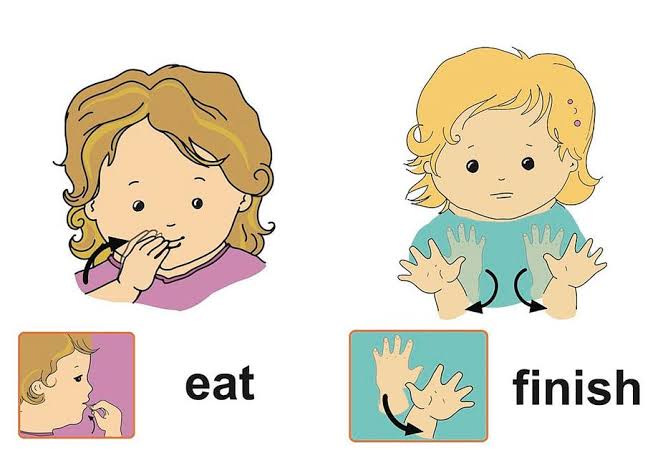Your baby will want to communicate with you before they can actually talk. The period in which your baby knows what they want but can’t express themselves properly can get frustrating for everyone.
A solution to this dilemma is to teach them to talk with their hands i.e. sign language. Parents.com explains why this process is helpful:
“Using sign language with your baby gives you a peek into his thoughts, which helps cement your bond, says Michelle Macias, M.D., chair of the section on developmental and behavioral pediatrics for the American Academy of Pediatrics (AAP). Signing may also cut down on the frustration (and tantrums) caused by your child’s inability to convey his needs. And it might even make your kid smarter. Studies have found that babies who were taught to sign had a larger vocabulary at 12 months than those who weren’t.”
How and when to begin
You can start using signs with your baby as early as you want. Realistically, however, AAP reveals that if you start signing with your baby when they are 6 to 7 months old, they’ll begin using them when they reach 8 to 9 months of age. Use these signs on a daily basis. It’s imperative you make them realise repetition is key and that signing once won’t be enough.
There are hordes of books, websites and YouTube videos to help you get started with the basic signs. BabySignLanguage.com has a printer-friendly language chart which can be displayed on your refrigerator for regular reinforcement.
Click here to watch a really helpful video. It’s about 7 minutes long and shows a mom teaching viewers starter signs such as “more“, “all done“, “wait” and “bed“. There are other tutorials for additional words you may want to learn signs of.
Which words are really important?
There’s no need to learn sign language for all words. The AAP recommends starting with words that are “the most meaningful or serve to describe the things your baby most often sees, does or wants“.
Some of the words they compiled to communicate with your baby include: airplane, baby, ball, blanker, cold, daddy, diaper, done, drink, eat, go, happy, help, I love you, milk, mommy, nap, no, water.
Don’t stop speaking
Employing sign language isn’t a substitute for verbal communication; it’s preferable to also say the word behind a sign out loud to reinforce its meaning for the baby. According to the AAP, “as long as signing does not take the place of speaking, it won’t get in the way of your baby’s learning to talk with her words as well as her hands“.
Lastly, it’s always resourceful to share signs you’ve learned with other caretakers so that they can understand the baby when you’re not around.













